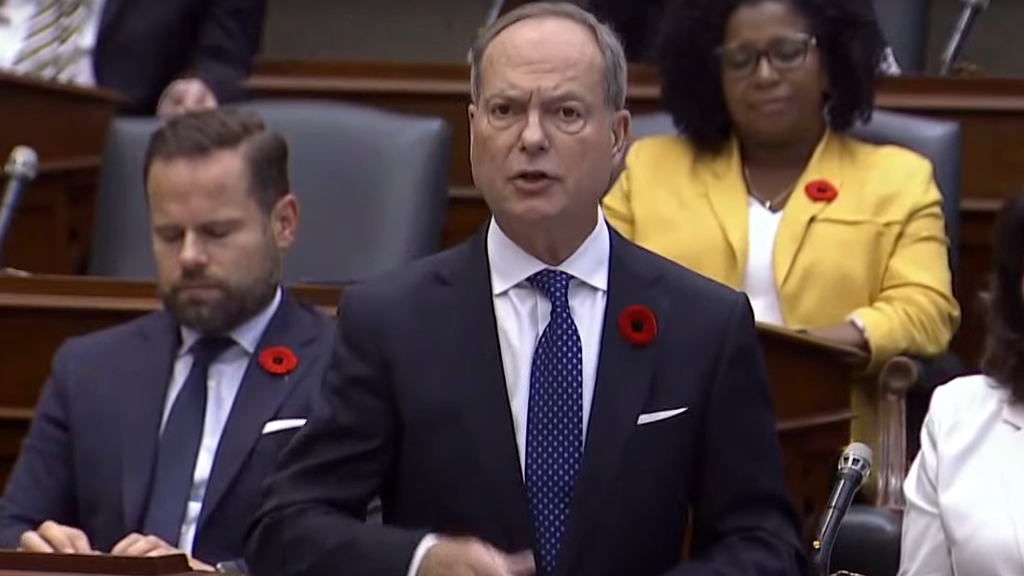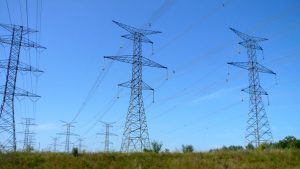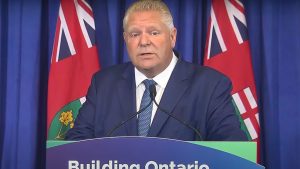OntarioтАЩs Minister of Finance Peter Bethlenfalvy highlighted the governmentтАЩs continuing pledges to build new roads and transit, support investment in new power sources and boost the manufacturing sector in the governmentтАЩs released in the Ontario Legislature Oct. 30.
But the flagship pledge, eclipsing the ministerтАЩs list of ongoing Build Ontario initiatives, was the Doug Ford governmentтАЩs confirmation it would deliver a $200 per taxpayer rebate early next year. The government is also extending the gas tax holiday another year.
тАЬOur governmentтАЩs responsible approach has resulted in an improved fiscal position since theтАп2024 budget, allowing us to keep taxes low, invest in infrastructure like roads, highways, hospitals and schools, and provide immediate relief to Ontario families as part of our plan to keep costs down,тАЭ said Bethlenfalvy.
тАЬThe province still is facing enormous challenges, from historic population growth and geopolitical uncertainty to the persistently high cost of living, but thanks to the efforts of Ontario workers and businesses, helped by real leadership from the government, with a long-term plan we can afford to enhance our plan to build so that we can meet these problems head on.тАЭ
The government will allocate an additional $100тАпmillion to theтАпInvestтАпOntarioтАпFund, bringing the fund total to $700тАпmillion. Just two days earlier, the government announced it was kicking in $10 million from the fund to support the construction of a new $155-million auto parts plant in Woodbridge, Ont. by Hanon Systems.
тАЬWe’ve attracted $44 billion in auto and EV related investments over the past four years,тАЭ stated the minister. тАЬIt will help create over 14,000 jobs.тАЭ
The economic outlook confirmed the governmentтАЩs plan to initiate a feasibility study to examine building a tunnel under Highway 401 in Toronto. Bethlenfalvy also reiterated the governmentтАЩs commitments to advance the 413, the Bradford Bypass, the Ontario Line, GO expansion, work on the 401 west and east, the QEW Skyway and Highway 7 from Markham to Pickering.
The planned infrastructure expenditure is $26.3тАпbillion in 2024тАУ25 and $191тАпbillion over the next 10тАпyears.
The governmentтАЩs annual homebuilding target is 125,000 homes, but this year, it forecasts, just 81,300 will be built.
╠¤
Initial stakeholder reaction
тАЬTodayтАЩs fall economic statement confirms OntarioтАЩs focus on building for tomorrow,тАЭ said Nadia Todorova, executive director of the in a statement. тАЬProjects like the Bradford Bypass, Highway 413, and the Ontario Line are vital for connecting communities, supporting economic growth, and enabling housing development across Ontario.тАЭ
The tweeted, тАЬFrom continued investments in housing-enabling water infrastructure, to making progress on new roads and highways, and building up the skilled trades, demonstrates the governmentтАЩs progress on building the critical infrastructure needed to support Ontario’s future.тАЭ
The (ORBA) praised a new government pledge to boost the Municipal Partnership Fund by $600 million and noted that the government is allocating $2 billion to the Housing-Enabling Water Systems Fund and the Municipal Housing Infrastructure Fund.
An ORBA statement said it тАЬwelcomes the Ontario governmentтАЩs reiterated and growing commitment to building the provinceтАЩs highways, roads and transportation networks.тАЭ
╠¤
Budget surplus expected by 2026-27
The government is now projecting a deficit of $6.6 billion in 2024тАУ25, an improvement of $3.2 billion from the outlook published in theтАп2024 Budget.тАпThe government said the revision reflects updated economic and revenue information.
Over the medium term, the government projects a deficit of $1.5 billion in 2025тАУ26, followed by a surplus of $0.9 billion in 2026тАУ27.
OntarioтАЩs net debt-to-GDP ratio for 2024тАУ25 is projected to be 37.8 per cent.
тАЬOntario now has the lowest borrowing odds of any province in ║┌┴╧│╘╣╧═Ї, saving taxpayers $1.2 billion that we are now able to reinvest back into the people of Ontario,тАЭ said Bethlenfalvy.
OntarioтАЩs real gross domestic product growth is projected to drop from 1.4 per cent in 2023 to 0.9 per cent in 2024. As interest rates continue to decline, realтАпGDPтАпgrowth is projected to strengthen to 1.7 per cent in 2025 and 2.3 per cent in both 2026 and 2027.
The government also highlighted its new long-term energy plan, announced Oct. 23. TheтАпAffordable Energy ActтАпwill prioritize nuclear energy as the provinceтАЩs grid expands towards 2050, with a full portfolio of other energy sources also contributing to the expansion.
тАЬUnder the leadership of the minister of energy and electrification, (we are) pursuing the largest energy procurement in the history of Ontario, and leaving nothing off the table,тАЭ said Bethlenfalvy.
The life sciences sector will receive new support, with Bethlenfalvy announcing an allocation of an additional $146 million in the government’s life sciences strategy.
The government is also launching theтАпAdvancing Ontario Made Manufacturing Plan, a 10-year тАЬroadmapтАЭ for expanding the sectorтАЩs workforce and production capacity. The announced goal is to boost the sectorтАЩs output to over $120тАпbillion and expand the manufacturing workforce to oneтАпmillion people by 2035.
Follow the author on X/Twitter @DonWall_DCN.











Recent Comments
comments for this post are closed